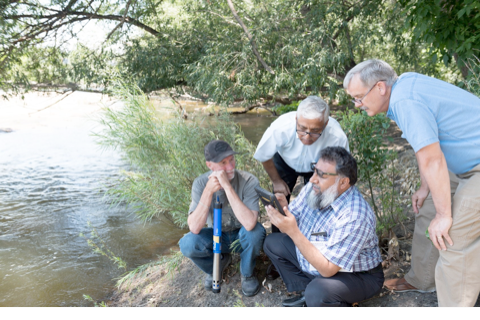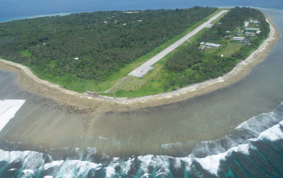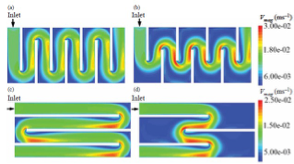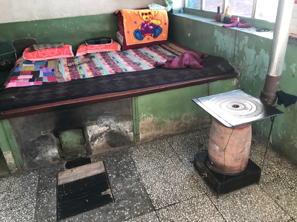Water and International Development
The Water and International Development (WAID) research focus area comprises efforts to develop and advance practical, affordable, and sustainable solutions to meet basic human needs, improve public health, and enhance quality of life. In particular, it aims to address the global water and sanitation crises through iterative, human-centered engineering innovations that support access to safe drinking water, effective sanitation systems, and successful hygiene practices. Research in this area investigates the interactions between civil and environmental engineering, public health, social institutions, cultural practices, and economic prosperity, and it works to advance the design of sustainable, scalable, and reproducible solutions to global environmental quality issues.
Example Projects
- US-Pakistan Centers for Advanced Studies in Water. This project is sponsored by the United States Agency for International Development (USAID). CSU (led by Dr. Timothy Gates) is the major subcontracting partner with the University of Utah, which leads the project. The purpose of the project is to build a state-of-the art applied research center in water resources at Mehran University of Engineering and Technology (MUET) in Pakistan to (i) improve private sector innovation and modernization, (ii) strengthen government policy to stimulate economic growth, and (iii) contribute solutions to Pakistan’s development challenges in the water sector. Major activities include curriculum development, faculty and graduate student exchanges and scholarships, and applied research. CSU focuses on the areas of irrigation/drainage, hydraulics, and integrated water resources management. Topics of current collaborative research are evaluating the impact of polymers on reducing seepage from earthen canals, multi-level remote sensing for the characterization of soil salinity across broad irrigated regions, and modeling and remediation of salinization in irrigated and drained fields. More information can be found at the project website: http://water.utah.edu/.

- Estimating Water Supply for Small Coral Islands. These projects (led by Dr. Ryan Bailey) use modeling tools to estimate the quantity of stored rainwater and groundwater for small coral islands under near-term climatic events (drought, typhoons) and long-term events such as climate change and population growth. Projects thus far have focused on the Federated States of Micronesia, the Republic of the Marshall Islands, and the Republic of Maldives. Groundwater models, both numerical and analytical, are used to estimate groundwater supply under climate and anthropogenic stresses, including sea level rise, future rainfall patterns, and increased groundwater pumping due to population growth. Rainwater catchment models are used to estimate rainwater supply under drought conditions and provide design criteria for new rooftop catchment systems. Projects have been funded by the World Bank, the U.S. Geological Survey, and the Secretariat of the Pacific Community. These projects have also produced tools to be used by island water resources managers, such as the coral island groundwater volume estimator: https://www.tandfonline.com/doi/abs/10.1080/02626667.2017.1382703. More details regarding projects and associated publications can be found at: ” http://jtcox94.wixsite.com/rtbailey.

- Optimal Drinking Water Disinfection. The Environmental Fluid Mechanics Research group led by Dr. Karan Venayagamoorthy has focused on developing optimal drinking water disinfection contact tanks that are commonly used by small public water systems in the United States. Our research funded by the Colorado Department of Public Health and Environment (CDPHE) culminated in a guidance document that CDPHE now uses to help small drinking water systems in Colorado. This work has direct impact on the well-being of the citizens of Colorado and can be applied throughout the US and overseas (particularly in developing countries). As an example, a collaborative project entitled “Sustainable Transfer of Innovative Drinking Water Technology to Sub-Saharan Africa for Optimal Impact” in partnership with Umgeni Water (which is responsible for supply of potable water to the EThekwini Metropolis that serves over 5 million people in South Africa) has been initiated. To cast this issue in a broader perspective, it is evident that access to clean water remains an acute problem in many developing countries in this part of the world. The United Nations estimates that one in nine people do not have access to clean and safe drinking water worldwide, and nearly 2 billion people drink contaminated water that can lead to severe illness and even death. Our goal is to develop effective and sustainable solutions for treatment of drinking water in Sub-Saharan Africa where it is perceived that there may be a critical need for such simple water treatment systems in order to improve the quality of potable water.

- Household Transitions to Clean Heating Energy (Beijing, Shanxi). Dr. Carter’s group is conducting a multi-season, multi-year field campaign in two provinces in China to evaluate indoor, outdoor, and personal air and environmental quality. Our measurements at baseline and following large-scale implementation of a combined coal ban and clean space heating technology among rural households will provide insight on the potential health and climate impacts of these policies.

- The Role of Housing in Modifying Air Pollution Exposure in Low- and Middle-Income Countries. (Columbia). Dr. Carter’s group is initiating a new field measurement campaign, joining a team of epidemiologists and environmental health scientists, to study the sources and patterns of air pollution in neighborhoods undergoing urbanization and the impacts of those air pollution exposures on health and subclinical markers of chronic disease. In particular, we will focus on the measures of indoor and outdoor air quality, air pollution chemical composition, and the residential building envelope to elucidate spatial and temporal patterns of exposure.